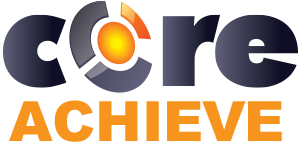Creating a Fluid Training Environment: Adapting to Different Learning Styles
November, 16 2023
Other posts:
Enhancing Team Dynamics for Effective Group Decision-Making with LMS Integration
Organizations increasingly rely on collaborative efforts to solve complex problems, innovate, and adapt to change, but how do we ensure that collaboration is happening.
Maximizing Small Business Potential with Training Technology
Training technologies can push small businesses ahead of their competitors, but what are the factors that go into choosing the right technology?
Unlocking Employee Potential: The Transformative Benefits of an Interactive Learning Management System (LMS)
Interactive training allows for unlocking employee potential, but how is it done?
Building a Robust Sales Pipeline with Training
Every organization wants a streamlined sales pipeline, but building one requires a series of interlocking activities with one of the most important being training.
Strategies for Adapting In-Person Training to Online Platforms
Online training is one of the most flexible ways of delivering training across organizations, but how do you even begin to adapt in-person training into online?
Training needs to be adaptable to ensure that users get the most effective training experience possible for any type of user.
Training professionals know that there are so many ways that people prefer to learn. Every individual is unique, and so are their preferred methods of learning. Recognizing and adapting to different learning styles is a fundamental aspect of creating a fluid and effective learning environment. To achieve this training environment, it critical to accommodate diverse learning styles in your training programs and implement them with a platform like a Learning Management System (LMS).
Understanding Learning Styles
To understand how to implement these changes, we must now what the most common types of learning styles are.
Visual Learners:
These individuals grasp information best through visual aids like charts, graphs, images, and videos.
Auditory Learners:
They prefer spoken information. Audiobooks, lectures, and discussions are their go-to sources of learning.
Kinesthetic/Tactile Learners:
Kinesthetic learners learn by doing. They need hands-on activities, simulations, or interactive experiences.
Reading/Writing Learners:
Text-based learners prefer written materials, note-taking, and text-based resources.
Social Learners:
They thrive in group settings. Social learners benefit from interaction with peers and collaborative learning.
Solitary Learners:
The opposite of social learners, solitary learners prefer working alone, reflecting, and self-paced learning.
Importance of Adapting to Learning Styles
Enhanced Engagement:
Adapting to various learning styles increases engagement as users are more likely to stay interested when content matches their preferences.
Improved Retention:
When information aligns with a user's style, they retain it more effectively and for a longer period.
Efficiency and Productivity:
Users can comprehend and apply information more efficiently, resulting in increased productivity while having faster training times.
Leveraging Your LMS
Implementing these styles would be almost impossible if not for a Learning Management System, as an LMS provides the flexibility of delivering multiple different types and styles of content at once.
Diverse Content Types:
Populate your LMS with various content types like videos, text documents, audio materials, and interactive simulations. This allows learners to choose content aligned with their learning style.
Interactive Elements:
Create interactive quizzes, games, and assignments that cater to kinesthetic learners. Include discussion forums for social learners.
Learning Paths:
Learning paths allow users to pick courses that would align most with their preferred style.
User-Generated Content:
Encourage learners to generate their content, promote collaboration and empower social learners, like through contents or discussion forums.
Assessment and Feedback:
Implement a variety of assessment methods, such as quizzes, written assignments, and peer reviews, to accommodate reading/writing, auditory, and kinesthetic learners.
Inclusive Accessibility
While adapting to various learning styles is essential, it's also crucial to ensure that the learning environment is accessible to all. Your LMS should be designed with features that assist learners with disabilities, ensuring inclusivity for everyone.
While creating this type of environment might sound difficult, a fluid learning environment, facilitated by an LMS, provides learners with the freedom to choose content and methods that suit their unique preferences. In doing so, you enhance engagement, improve retention, boost confidence, and increase the overall effectiveness of your training programs. So, as you design and implement your training initiatives, remember that embracing diversity in learning styles is the key to creating a truly effective and inclusive training environment.
Get started with CoreAchieve for free today.
Photo by Thierry Meier on Unsplash

Leave comment: